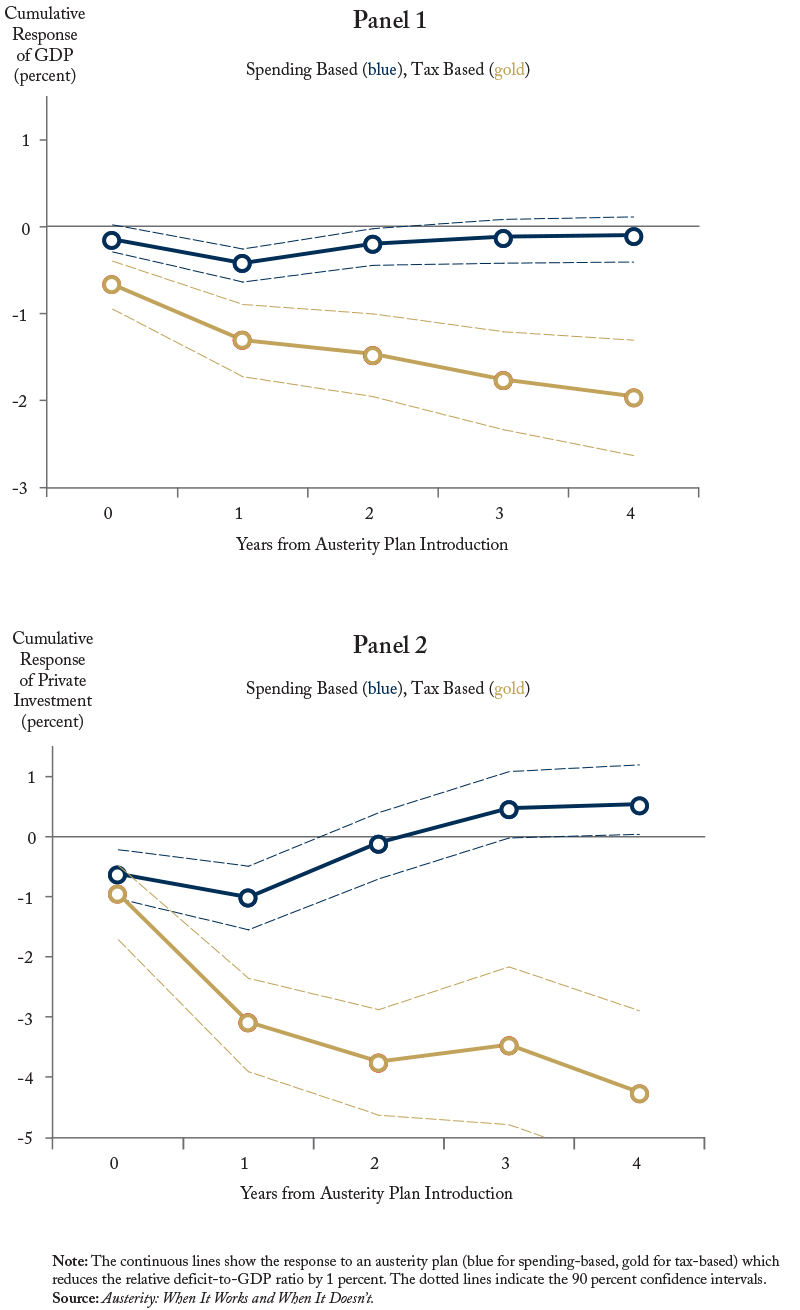Date: September 12, 2019
Re: Austerity and the Economy: Spending Cuts Versus Tax Increases
Alberta and Ontario are now in the midst of fiscal austerity programs. Austerity indicates a policy of sizeable reduction of government deficits aimed at stabilization of government debt, achieved by means of spending cuts or tax increases. Discussions about the relative benefits and costs of the austerity policies around the world have often been toxic, taking a very harsh and ideological tone.
The anti-austerity front argues that austerity is counterproductive: it results in increases, rather than reductions, in the debt-to-GDP ratio, since it generates reductions in the denominator of this ratio which more than offset the gains in the numerator. The pro-austerity front argues that lowering uncertainty of future taxation reduces the cost of financing the debt and provides incentives to private investment. In this scenario the debt can be brought under control with limited recessionary impact (and in some extreme cases with some expansionary impact) as the increase in private expenditure makes up for the reduction in government expenditure.
The harsh discussion on the effects of austerity has distracted commentators and policymakers from the most policy-relevant result, namely the enormous difference, on average, between when governments reduce deficits mainly by lowering spending or increasing taxes. Our book “Austerity: When It Works and When It Doesn’t” discusses the theory and the evidence needed to more properly assess the consequences of the different types of austerity.
We find that spending-based austerity plans are remarkably less costly than tax-based plans. Austerity based on spending reduction has, on average, a close to zero effect on output and business investment, and leads to a reduction of the debt-to-GDP ratio (Figure 1). Deficit reduction plans through increasing taxes have the opposite effect: they cause large and long lasting recessions and do not lead to the stabilization of the debt-to-GDP ratio.

Two recent examples from Ireland and Spain in response to the Eurozone crisis highlight this difference. The Spanish correction, which featured a larger share of tax hikes, markedly slowed the real GDP growth and did not result in a decline in the debt ratio. In Ireland, the spending-based correction had little output costs and led to a sharp decline in debt.
Our empirical analysis of the macroeconomic effect of different types of austerity compares decades of economic and fiscal outcomes of 16 Organisation for Economic Co-operation and Development countries. By carefully consulting source documents, we look only at efforts (both over a single year and over multiple years) meant to reduce debt and deficits. Major episodes of austerity often are accompanied by changes in other policies: monetary policy; exchange rate movements; labour market reforms; deregulation of various product markets; tax reforms; and so on. These kinds of accompanying changes do not affect our results. Our book contains many more details for interested readers.
Contrary to common beliefs, the data do not show that politicians who implement austerity policies systematically lose the next elections. Presumably, when the need for austerity is well explained to the voters, and austerity is not too costly in terms of short run output losses, they can be successful.
For example, in the 1990s, Canada implemented a successful package of large government cuts which, coupled with accommodating monetary policy and structural reforms, was expansionary.
Talking about “austerity” without distinction of how austerity is implemented does not make any sense. The composition of austerity plans is crucial to understand their effects on growth and fiscal sustainability.
Alberto Alesina, Carlo Favero and Francesco Giavazzi are the authors of Austerity: When It Works and When It Doesn’t, from Princeton University Press.
https://www.cdhowe.org/intelligence-memos/alesina-favero-giavazzi-austerity-and-economy-spending-cuts-versus-tax-increases
 Recent Comments
Recent Comments